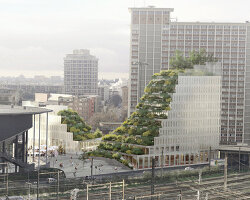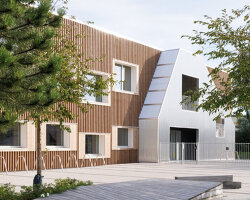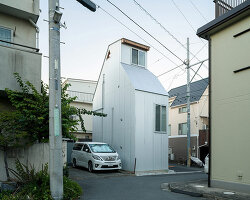Maroquinerie de la Sormonne opens in ardennes, france
Hermès entrusted Lille-based architecture studio Coldefy with the design of its second leather goods factory, Maroquinerie de la Sormonne, in the industrial zone of Ardennes, France. The 5,700 sqm building was designed according to Coldefy’s signature approach: a sensitive and pragmatic vision of architecture that interacts with the environment and respects its identity. More specifically, the studio revisits the archetypal workshop, reinvents the work environment for the benefit of the artisans, and creates a high environmental performance building. The result is a unique, passive, low-carbon burnt wood and glass design combining softness, sobriety, and technical sophistication.

all images © Gautier Deblonde | @gautier_deblonde_atelier
hermès & coldefy revisit the archetypal production workshop
For Coldefy (see more here), the challenge of Maroquinerie de la Sormonne lies in a paradigm shift: to revisit the industrial building and the stereotypes imposed by process and production logic. From the outside, the shed roof, evocative of the industrial world, provides optimum light for the craftsman’s work. The architects redesigned it to highlight the double-sloped roof, the symbol of the house, on the north side, with an overhang that protects it from southern light. Inside, the ubiquitous ‘diagrid’ timber frame extends the symbolism. In this subtle domestic atmosphere, the new leather goods workshop welcomes craftsmen in a setting conducive to concentration and the sharing of skills and know-how, the foundation of the Hermès artisanal model.

double-sloped Maroquinerie de la Sormonne
The team redefined the basic parameters of the workshop space by multiplying its proportion by 11.5 meters and adopting its simple house section with north-facing dormers. The plan is a direct translation of the ideal functional layout. A set of four cutting workshops defines the heart of the leatherwork. The size and proportions of these workshops can be easily adapted by reorganizing the partitions within the given structural grid. Large cantilevers running the length of the building house the exterior porches and terraces. The entire structure has been designed to be multifunctional, flexible, adaptable, resilient, and reversible over time, as required by today’s and tomorrow’s workspaces.

Coldefy revisits the archetypal workshop with a burnt wood cladding
pairing burnt wood with glass, concrete, and aluminum
Coldefy chose to build the primary structure in wood, both for the factory’s carbon footprint and the material’s renewable quality. Complementing the wooden framework sourced from Ardennes’ Douglas Fir is a concrete floor slab and glass facades designed with dark-tinted aluminum joinery and burnt-wood cladding, held together by a timber frame. Originating from a traditional 18th-century Japanese technique for making wood rot- and fire-proof, UV-resistant, and maintenance-free, this burnt wood boasts exceptional strength with a lifespan of over 80 years. The material was also chosen for its aesthetic appeal, ranging from light gray to deep blacks with bluish highlights. The roof, meanwhile, is clad in black steel cladding, a shade reminiscent of burnt wood.
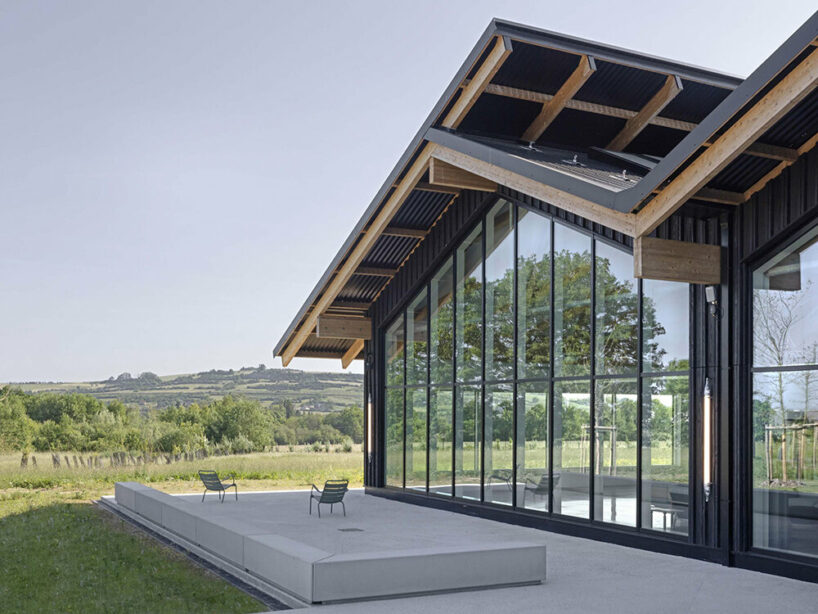
the project is located in the industrial zone of Ardennes, France
E4C2-certified bioclimatic design by coldefy
Like Hermès, the Maroquinerie de la Sormonne blends into its environment with simplicity, discretion, and high standards. It takes advantage of the site’s many assets: a generous biodiversity, a skyline, views over farmland, and remarkable landscape features. Committed to preserving ecosystems, Hermès and Coldefy worked with environmental experts to safeguard the habitat of the forty or so species of birds and amphibians found near the building. The many trees on site, including several old oaks, now create a plant corridor, enabling species to migrate throughout the plot. Local orchards were also planted to accelerate the development of biodiversity and harmonize the expansive landscape design.

Maroquinerie de la Sormonne blends into its environment with simplicity and discretion
Together, these features have allowed the Maroquinerie de la Sormonne to earn E4C2 certification standards. Additional steps included selecting the factory’s topographical position to limit the site’s environmental impact, creating water recovery meadows and ditches for phyto-purification, using low-carbon materials such as timber, and installing 1,900 sqm of solar panels on the roof, a geothermal heating and air-conditioning system, and high-performance stone-wool insulation, which all contribute to the building’s environmental performance. The electricity produced is partially consumed by the building, notably by the ventilation and lighting systems. The excess is exported to the national grid. The factory is supplied with 100% renewable energy annually, as required by the E4 label.

blending softness and sobriety into the design


this is Hermès’ second leather goods factory
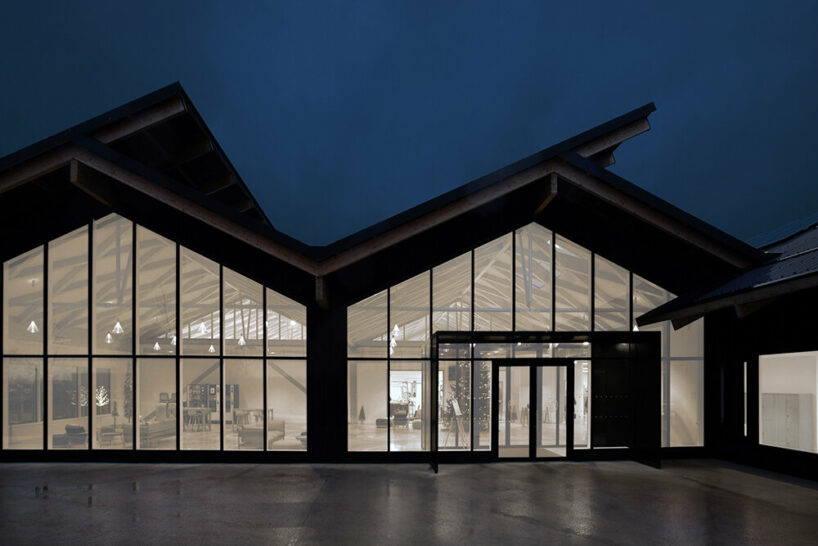
night-time view






project info:
name: Maroquinerie de la Sormonne
location: Ardennes, France
architect: Coldefy | @coldefy.fr
sustainability: Zefco
structure and facade: VP green
landscape: Vogt
MEP: Espace-temps
civil engineer: ATEVE
acoustics engineer: Lamoureux
economist: AXIO
kitchen design: Behal – Patrice Legrand
construction management: TDA
cerficiation: E4C2 (Energy Positive and Carbon Reduction)
total area: 5,700 sqm
completion year: 2019
delivery date: December 2022














